Wilful blindness is defined as “a term used in law to describe a situation in which a person seeks to avoid civil or criminal liability for a wrongful act by intentionally keeping himself or herself unaware of facts that would render him or her liable.”
Another definition: “Wilful blindness is a legal concept which says that if there are things that you could know and should know and somehow manage not to know, the law holds you responsible.”
 In October 2008, ten years ago this month, the inquest of 65-year-old Ian Fox, an ex-postal worker, was held at St Pancras Coroner’s Court. Ian had jumped in front of a train at Finchley Road tube station (right).
In October 2008, ten years ago this month, the inquest of 65-year-old Ian Fox, an ex-postal worker, was held at St Pancras Coroner’s Court. Ian had jumped in front of a train at Finchley Road tube station (right).
An account of the inquest appeared in the Camden New Journal, under the headline: ‘Wonder drug’ played a part in man taking his own life – coroner.
Ian’s widow Maria told the court that Ian had been prescribed Citalopram for a month before his death, and “had expressed a wish to come off it, complaining of confusion and anxiety.” She said that “until he began taking Citalopram he had only been suffering from mild depression, brought on by retirement from his Royal Mail job and a foot injury. She added that Ian’s action was completely out of character, and said: “I felt Citalopram was to blame for my husband’s death.”
 Delivering a narrative verdict, Coroner Andrew Reid (left) ruled that Ian had taken his life, adding: “I’m satisfied he did so while the balance of his mind was disturbed while suffering the adverse effects of Citalopram.”
Delivering a narrative verdict, Coroner Andrew Reid (left) ruled that Ian had taken his life, adding: “I’m satisfied he did so while the balance of his mind was disturbed while suffering the adverse effects of Citalopram.”
What is significant about this inquest is that it is the most recent account that I have managed to find online where a British coroner has admitted that Lundbeck’s SSRI antidepressant Citalopram can induce suicide.
The reason why, for the past ten years, coroners have been in denial over the propensity of Citalopram and other SSRI antidepressants to induce suicide may well have emanated from events in Cumbria earlier that year.
 In March 2008, an inquest in Cumbria heard that retired bank manager Nigel Woodburn had deliberately driven his car into a tree, four days after having been prescribed Citalopram. Coroner Ian Smith (left) told Nigel’s relatives that he would write to the Committee on the Safety of Medicines (CSM) as “he knew of several other suspected suicides involving the same group of antidepressants, known as selective serotonin re-uptake inhibitors (SSRIs).” He said: “I have to say this is probably the fifth, if not sixth inquest I’ve heard within a period of three years when somebody either just going on to Citalopram or Seroxat, or coming off it, have killed themselves one way or another, totally out of the blue, totally without expectation, without a history of suicidal thoughts in the past.”
In March 2008, an inquest in Cumbria heard that retired bank manager Nigel Woodburn had deliberately driven his car into a tree, four days after having been prescribed Citalopram. Coroner Ian Smith (left) told Nigel’s relatives that he would write to the Committee on the Safety of Medicines (CSM) as “he knew of several other suspected suicides involving the same group of antidepressants, known as selective serotonin re-uptake inhibitors (SSRIs).” He said: “I have to say this is probably the fifth, if not sixth inquest I’ve heard within a period of three years when somebody either just going on to Citalopram or Seroxat, or coming off it, have killed themselves one way or another, totally out of the blue, totally without expectation, without a history of suicidal thoughts in the past.”
The following month, Mr Smith presided over the inquest of 56-year-old farmer Philip Morton, who had been prescribed antidepressants a few days before his death by hanging. Once again, Mr Smith “criticised the use of antidepressants and expressed concerns over a pattern of people taking their own lives days after being prescribed the drugs.”
The report concluded with this extraordinary sentence: “Mr. Smith went on to say that he had dealt with six to eight cases in a short period where people had taken their lives days after starting antidepressant drugs and he had reported these concerns to the health authorities, despite coming under criticism for speaking out.”
I suspect that we will never find out the identity of the person or the organisation that was in such a position of influence that it was able to criticise one of the country’s leading coroners. However, what I do know is that, from that point in time until his retirement in 2014, I found no more reports of Mr Smith’s admitting to the link between SSRIs and suicide, although he was presented with opportunities to do so.
 Even at the inquest of 10-year-old schoolboy Harry Hucknell (right) in 2011, Mr Smith decided to “hit out at the pressures placed on youngsters by today’s society,” rather than to blame the lethal combination of Fluoxetine and Ritalin prescribed by a psychiatrist who had clearly flouted NICE Guidelines but, according to Mr Smith, “had acted appropriately”.
Even at the inquest of 10-year-old schoolboy Harry Hucknell (right) in 2011, Mr Smith decided to “hit out at the pressures placed on youngsters by today’s society,” rather than to blame the lethal combination of Fluoxetine and Ritalin prescribed by a psychiatrist who had clearly flouted NICE Guidelines but, according to Mr Smith, “had acted appropriately”.
Before 2008, there were several reports of inquests where Citalopram and other similar antidepressants had been linked by coroners in England and Wales to self-inflicted deaths. My research goes back to 2003, ten years before I began this website.
 At this time, the most widely-used SSRI was possibly Eli Lilly’s Prozac (Fluoxetine), but the one which featured in the most contentious inquests was GSK’s Seroxat (Paroxetine). By 2003, the drug had already achieved notoriety, and its potential to induce suicide had been explored in a BBC TV documentary The Secrets of Seroxat in October 2002, which can still be viewed on YouTube.
At this time, the most widely-used SSRI was possibly Eli Lilly’s Prozac (Fluoxetine), but the one which featured in the most contentious inquests was GSK’s Seroxat (Paroxetine). By 2003, the drug had already achieved notoriety, and its potential to induce suicide had been explored in a BBC TV documentary The Secrets of Seroxat in October 2002, which can still be viewed on YouTube.
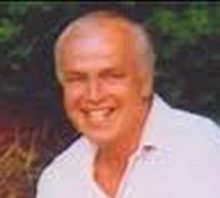 In March 2003, at the inquest of 56-year-old retired headteacher Colin Whitfield (right) from Brecon, his widow Kathryn said that her husband had been prescribed Seroxat for anxiety. Two weeks later, he locked himself in his garden shed and slit his wrists. There had been nothing to suggest he was suicidal and he had not been suffering from depression.
In March 2003, at the inquest of 56-year-old retired headteacher Colin Whitfield (right) from Brecon, his widow Kathryn said that her husband had been prescribed Seroxat for anxiety. Two weeks later, he locked himself in his garden shed and slit his wrists. There had been nothing to suggest he was suicidal and he had not been suffering from depression.
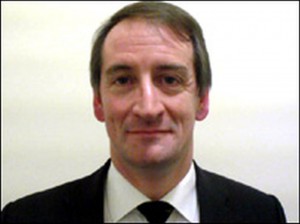 Coroner Geraint Williams (left) said he would be writing to the Health Secretary to demand the drug be withdrawn for further safety checks. He said: “I have grave concerns that this is a dangerous drug that should be withdrawn until at least detailed national studies are undertaken. I am profoundly disturbed by the effect this drug had on Colin Whitfield. It is quite clear that Seroxat has a profound effect on the thinking process of anyone who takes it.”
Coroner Geraint Williams (left) said he would be writing to the Health Secretary to demand the drug be withdrawn for further safety checks. He said: “I have grave concerns that this is a dangerous drug that should be withdrawn until at least detailed national studies are undertaken. I am profoundly disturbed by the effect this drug had on Colin Whitfield. It is quite clear that Seroxat has a profound effect on the thinking process of anyone who takes it.”
 In May 2003, West Sussex coroner Roger Stone (left) presided over the inquest of Emma Gibson, a 35-year-old nurse, who set herself on fire after her prescription of Seroxat had been increased. Mr Stone said that he would inform the CSM as “recording the drug as a factor in her death might help another family in similar circumstances.”
In May 2003, West Sussex coroner Roger Stone (left) presided over the inquest of Emma Gibson, a 35-year-old nurse, who set herself on fire after her prescription of Seroxat had been increased. Mr Stone said that he would inform the CSM as “recording the drug as a factor in her death might help another family in similar circumstances.”
 In September 2003, an inquest in North London heard that builder Jamie Hoole (18) was found hanged two months after being prescribed Seroxat. At first he responded well, but then became very agitated and couldn’t sleep. Coroner Alison Thompson (left) said that Jamie’s death may have been “wholly or in part” linked to his use of the drug.
In September 2003, an inquest in North London heard that builder Jamie Hoole (18) was found hanged two months after being prescribed Seroxat. At first he responded well, but then became very agitated and couldn’t sleep. Coroner Alison Thompson (left) said that Jamie’s death may have been “wholly or in part” linked to his use of the drug.
Jamie’s mother Jean said after the inquest: “Jamie got worse and worse and it was frightening. I thought the doctors would take him off it. They didn’t. But nobody has had the full facts before taking this drug. That makes me angry.”
 Also in September 2003, an inquest in Eastbourne heard that 18-year-old Sharise Gatchell (right) “underwent a complete personality change” when she took Seroxat. Her mother Stephanie said the drug “scared her” and, after Sharise started self-harming, she asked her not to take it again. But Sharise secretly went back on the antidepressant and, in May 2003, just two weeks after resuming the prescription, she hanged herself at home while her parents were away for the weekend. An empty packet of Seroxat pills had been left on her bed.
Also in September 2003, an inquest in Eastbourne heard that 18-year-old Sharise Gatchell (right) “underwent a complete personality change” when she took Seroxat. Her mother Stephanie said the drug “scared her” and, after Sharise started self-harming, she asked her not to take it again. But Sharise secretly went back on the antidepressant and, in May 2003, just two weeks after resuming the prescription, she hanged herself at home while her parents were away for the weekend. An empty packet of Seroxat pills had been left on her bed.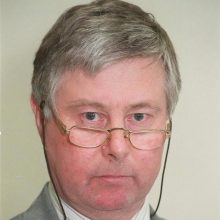
Coroner Alan Craze (left) stopped short of making a definite link between Seroxat and suicide, but he said he would pass the findings of the inquest to the CSM.
In March 2004, an inquest in Cornwall was told that Jane Dibb, (28), an English teacher, had complained about pressures of work before she set herself alight on Dartmoor in April 2003.
 Although Jane’s family blamed her death on the antidepressant Seroxat that she had been prescribed, coroner Elizabeth Earland (left) delivered a verdict of suicide, adding “There is no cogent evidence that Seroxat caused Jane’s death.”
Although Jane’s family blamed her death on the antidepressant Seroxat that she had been prescribed, coroner Elizabeth Earland (left) delivered a verdict of suicide, adding “There is no cogent evidence that Seroxat caused Jane’s death.”
In July 2004, Ian Smith conducted the inquest of 42-year-old local writer Dickon Abbott from Ulverston who, in February of that year, had hanged himself “out of the blue”. The court heard that Dickon was in the course of switching medication from Effexor (Venlafaxine) to Seroxat. To make the transition, he had gradually stopped taking Effexor and had been taking Seroxat for 11 days when he died.
Dickon’s doctor confirmed that the switch in drugs could cause increased anxiety, and said that there had been press reports about Seroxat increasing suicidal tendencies. However, he pointed out that the drug had successfully treated Dickon in the past.
Mr Smith rejected a verdict of suicide, as Dickon “did not necessarily know what he was doing.” The coroner added that he had dealt with two other suicides which happened when the person was changing medication, and pressed for more research.
In October 2003, 50-year-old tax inspector John Kelly bled to death from a self-inflicted stab wound at a house in Gateshead. At his inquest in October 2005, John’s sister said that he had been prescribed Seroxat in 1999, and when he was taken off the drug in 2003, he had experienced possible manic withdrawal symptoms. She said: “After coming off Seroxat he kept repeating, `I am absolutely desperate’.” However, a consultant psychiatrist said that any withdrawal symptoms would have been countered by another antidepressant that John began taking at the same time.
Coroner Terry Carney said: “I am satisfied that Mr Kelly received an appropriate assessment by doctors and was given a proper level of care. Mr Kelly intended to kill himself.”
In July 2006, Leslie Todhunter (61) was found hanging from a tree in a field at his son’s farm in Cumbria. His inquest in December heard that he suffered from periods of depression for which he had been prescribed Seroxat. At the time of his death, he had recently begun to take the tablets again.
Recording an open verdict, coroner David Osborne (left) speculated that perhaps the drugs may have played a part in his death. He said: “We see cases like this from time to time, and one theory is that when you start on antidepressants there is a period in the first two weeks when the patient’s mood might go into a drop, and perhaps feel even worse than they did.”
In November 2006, 52-year-old Ann Scarterfield disappeared from her home in South Devon. She had a history of depression and had been prescribed Seroxat. She didn’t open up her business one morning, and a suicide note was found in her flat. Later, her car was found in a car park by the sea. In December and January, body parts were washed up on Chesil Beach, Dorset, which DNA tests showed were hers.
 At her inquest in July 2007, a lifelong friend suggested that Seroxat may have played a rôle in her friend’s death. However, coroner Darren Salter (left) said he was not convinced that the drug had contributed to Ann’s death. He stated that the cause of death was drowning in the sea and he recorded a verdict of suicide. He added: “Ann Scarterfield took her own life while the balance of her mind was disturbed. Miss Scarterfield had a history of depression and had been prescribed the anti-depressant Seroxat.”
At her inquest in July 2007, a lifelong friend suggested that Seroxat may have played a rôle in her friend’s death. However, coroner Darren Salter (left) said he was not convinced that the drug had contributed to Ann’s death. He stated that the cause of death was drowning in the sea and he recorded a verdict of suicide. He added: “Ann Scarterfield took her own life while the balance of her mind was disturbed. Miss Scarterfield had a history of depression and had been prescribed the anti-depressant Seroxat.”
But Seroxat was not the only antidepressant that was causing coroners concern in this period. In March 2003, Durham coroner Martin Shaw told the relatives of Enid McDermott (64), who had stabbed herself shortly after being prescribed Prozac (Fluoxetine), that he had the concerns about the drug and would send details of the hearing to the CSM. He added: “I have had occasions before, in very similar cases, where it looks as if it might be involved. It is a possibility that could explain these dreadful actions.”
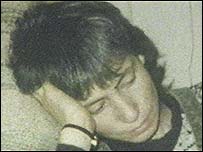 In June 2003, the inquest of 52-year-old librarian Wendy Hay (right) was held in Leeds. Wendy had been found hanged at home in September 2002. Wendy’s husband Alistair, Professor of Environmental Toxicology at Leeds University, was convinced that prescribed Prozac had caused her death.
In June 2003, the inquest of 52-year-old librarian Wendy Hay (right) was held in Leeds. Wendy had been found hanged at home in September 2002. Wendy’s husband Alistair, Professor of Environmental Toxicology at Leeds University, was convinced that prescribed Prozac had caused her death.
 Alistair was supported by Professor David Healy (right), one of the world’s leading psychopharmacologists, who said that the combination of some clinical studies of Prozac and records of Wendy’s case had led him to conclude that the drug was a factor in her suicide. He added: “She wasn’t taking her own life with the usual intent. This drug can make healthy people who aren’t remotely thinking of suicide suicidal.”
Alistair was supported by Professor David Healy (right), one of the world’s leading psychopharmacologists, who said that the combination of some clinical studies of Prozac and records of Wendy’s case had led him to conclude that the drug was a factor in her suicide. He added: “She wasn’t taking her own life with the usual intent. This drug can make healthy people who aren’t remotely thinking of suicide suicidal.”
 Recording a narrative verdict, coroner David Hinchliff (left) said: “There was evidence during the inquest that in a minority of patients who take this drug, that it may have adverse side effects. This drug may or may not have contributed to Wendy Hay’s action.”
Recording a narrative verdict, coroner David Hinchliff (left) said: “There was evidence during the inquest that in a minority of patients who take this drug, that it may have adverse side effects. This drug may or may not have contributed to Wendy Hay’s action.”
 In July 2004, an inquest in Cambridge heard that 61-year-old David Weigall, a retired lecturer, had taken his life after being prescribed Venlafaxine. Coroner David Morris (left) decided that “Mr Weigall took his own life by hanging whilst suffering from a depressive illness which may have been exacerbated by the medicine prescribed for that illness.”
In July 2004, an inquest in Cambridge heard that 61-year-old David Weigall, a retired lecturer, had taken his life after being prescribed Venlafaxine. Coroner David Morris (left) decided that “Mr Weigall took his own life by hanging whilst suffering from a depressive illness which may have been exacerbated by the medicine prescribed for that illness.”
 22-year-old Jon Medland (right) was in the final year of his medical degree course at Manchester University when he was found hanged at his student lodgings in January 2004. Five weeks before his death, he had been prescribed Roaccutane for acne. At the start of the new term, Jon began to complain of feeling tired and stressed, and feared his mental state was somehow connected to Roaccutane. Five days before his death, Jon stopped taking the tablets. Friends urged him to make an appointment with his GP, who prescribed him Citalopram. He took his life the following day.
22-year-old Jon Medland (right) was in the final year of his medical degree course at Manchester University when he was found hanged at his student lodgings in January 2004. Five weeks before his death, he had been prescribed Roaccutane for acne. At the start of the new term, Jon began to complain of feeling tired and stressed, and feared his mental state was somehow connected to Roaccutane. Five days before his death, Jon stopped taking the tablets. Friends urged him to make an appointment with his GP, who prescribed him Citalopram. He took his life the following day.
At his inquest in October 2004, coroner Leonard Gorodkin delivered a verdict of suicide, but added: “For a drug to affect a person of a very solid life foundation, if it can lead them to take their own life, then it deserves further investigation, if a link can be proved. But I cannot say with any certainty that the effects of the drug Roaccutane led him to take his own life. All I can say is that the warnings that are already present should be made very clearly and strongly.”
 In November 2004, the inquest of Roger Whipp (59) was held in Surrey. Coroner Michael Burgess (left) heard that Roger had been suffering side effects from an antidepressant, and it was changed. This second antidepressant caused him to “freeze up”, and he was taken to hospital, where doctors decided he was either suffering withdrawal symptoms from the first drug or side effects from the second. He was taken off the antidepressants and given a drug to ease his movement. A few days later, Roger stepped into the path of a lorry. Mr Burgess said he would sent a report to the CSM, adding: “Side effects as extreme as these need to be recorded so the profile of these medicines are recognised as causing these difficulties in some people.”
In November 2004, the inquest of Roger Whipp (59) was held in Surrey. Coroner Michael Burgess (left) heard that Roger had been suffering side effects from an antidepressant, and it was changed. This second antidepressant caused him to “freeze up”, and he was taken to hospital, where doctors decided he was either suffering withdrawal symptoms from the first drug or side effects from the second. He was taken off the antidepressants and given a drug to ease his movement. A few days later, Roger stepped into the path of a lorry. Mr Burgess said he would sent a report to the CSM, adding: “Side effects as extreme as these need to be recorded so the profile of these medicines are recognised as causing these difficulties in some people.”
 An inquest in March 2005 heard that student James Hirst (21) suffered from IBS. A doctor thought that this might be due to depression and, in December 2004, prescribed Venlafaxine. 11 days later, James was found hanged in woodland. Recording a verdict of suicide, coroner Gordon Ryall (left) “offered the family the chance to have a closer look at the effects of the drug on their son’s health. But he warned they may not learn anything more from further investigation.”
An inquest in March 2005 heard that student James Hirst (21) suffered from IBS. A doctor thought that this might be due to depression and, in December 2004, prescribed Venlafaxine. 11 days later, James was found hanged in woodland. Recording a verdict of suicide, coroner Gordon Ryall (left) “offered the family the chance to have a closer look at the effects of the drug on their son’s health. But he warned they may not learn anything more from further investigation.”
As prescriptions of Seroxat began to decline, the SSRI that began to feature most in inquests was Citalopram. In May 2005, an inquest in Honiton heard that, in March 2004, teacher Stephen Leggett (53) drove from his home in Ilminster to woods in South Devon where he set himself on fire. Under a lot of pressure at school, Stephen had consulted his GP, and was prescribed Citalopram. Just five days later, he ended his life. His widow Rosalind was convinced that Citalopram was to blame, saying: “I believe he was completely out of his mind because of this drug”.
After coroner Elizabeth Earland had delivered a verdict of suicide, Rosalind said that it was what they expected. However, she said that it had not changed the family’s fundamental belief that “Stephen’s actions were not his own”, and she called for more research into antidepressants.
In June 2005, Worcestershire coroner Victor Round originally recorded a verdict of suicide after Trina Clinton (54) had fallen from a multi-storey car park. But when Trina’s sister-in-law said that the Citalopram found in Trina’s blood “must have been a contributory factor”, Mr Round changed his ruling to an open verdict.
Perhaps the most significant inquest of this period was that of retired lorry driver John Rudd (62) in April 2006. Cumbria coroner David Osborne revealed that John had been struck by a train a few days after being prescribed Citalopram. He said that “at least six fatalities he has investigated since Christmas had started taking Citalopram soon before their deaths,” and added “In most cases the people had been prescribed that medication for a short period of time – days or weeks – and then they took their own life usually totally out of the blue.”
However, even in this period of enlightenment, there were coroners who, for whatever reason, refused to acknowledge the harm done by Citalopram, even in the face of the most compelling evidence.
 Perhaps the most prominent of these was Sheriff Payne (left), coroner of Dorset. In October 2005, Mr Payne presided over the inquest of Sandra Mackie, a 45-year-old teaching assistant. Sandra’s husband told the inquest that, a month before her death, Sandra had been prescribed Citalopram by Dr Lovejoy, her GP. Initially, “she refused to take the tablets because she feared the side effects, one of which was suicide or thoughts of suicide.” However, “Dr Lovejoy said Mrs Mackie began to take the tablets because he had told her that he would have to involve psychiatric services if she continued to refuse the medication.”
Perhaps the most prominent of these was Sheriff Payne (left), coroner of Dorset. In October 2005, Mr Payne presided over the inquest of Sandra Mackie, a 45-year-old teaching assistant. Sandra’s husband told the inquest that, a month before her death, Sandra had been prescribed Citalopram by Dr Lovejoy, her GP. Initially, “she refused to take the tablets because she feared the side effects, one of which was suicide or thoughts of suicide.” However, “Dr Lovejoy said Mrs Mackie began to take the tablets because he had told her that he would have to involve psychiatric services if she continued to refuse the medication.”
Mr Payne described Citalopram as a “fairly standard, fairly safe antidepressant” and said that Sandra had “appeared to have greatly improved after taking the tablets.” The cause of death was given as hanging, with depression as the other significant condition.
 Mr Payne took a similar stance in June 2008, at the inquest of Gordon Briggs (right), a 58-year-old school caretaker from Bournemouth, who was found hanged at his place of work. Gordon’s sister Linda “told the inquest her brother became restless and heard voices in his head telling him to commit (sic) suicide, shortly after he started taking the anti-depressant Citalopram.” She said: “Within the space of three weeks my brother took three overdoses and then he hanged himself.” Gordon’s GP had doubled the dosage following Gordon’s second overdose. A psychiatrist told the inquest that, despite research, “there was no evidence linking Citalopram with suicide”, while Mr Payne attributed Gordon’s death to the possible closure of the school.
Mr Payne took a similar stance in June 2008, at the inquest of Gordon Briggs (right), a 58-year-old school caretaker from Bournemouth, who was found hanged at his place of work. Gordon’s sister Linda “told the inquest her brother became restless and heard voices in his head telling him to commit (sic) suicide, shortly after he started taking the anti-depressant Citalopram.” She said: “Within the space of three weeks my brother took three overdoses and then he hanged himself.” Gordon’s GP had doubled the dosage following Gordon’s second overdose. A psychiatrist told the inquest that, despite research, “there was no evidence linking Citalopram with suicide”, while Mr Payne attributed Gordon’s death to the possible closure of the school.
An inquest in July 2008 heard that truck driver Neil Rowley (28) had hanged himself from a tree in Pontypridd in February 2008. Neil’s brother told the inquest that he had “no idea why his brother took his own life,” adding, “he was in work right up until his death, and seemed to be behaving normally.” 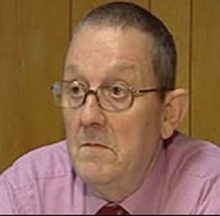 Even though Citalopram was found in Neil’s system, coroner Philip Walters (left) said: “I don’t suppose we are ever going to get to the bottom as to why this happened. I suspect that, as in most cases of young men doing this, there are facts that are not known.” He delivered a verdict of suicide.
Even though Citalopram was found in Neil’s system, coroner Philip Walters (left) said: “I don’t suppose we are ever going to get to the bottom as to why this happened. I suspect that, as in most cases of young men doing this, there are facts that are not known.” He delivered a verdict of suicide.
Another coroner who has habitually failed to link antidepressants to suicide is the aforementioned Alan Craze, coroner of East Sussex, whose area includes Beachy Head. In May 2009, he conducted the inquest of Stephanie Wainwright (33), who had been found hanged the previous April. The court heard that Stephanie had been using cannabis regularly since the age of 16. However, just 24 hours before her death, Stephanie had begun to take Citalopram which had been prescribed by her GP.
Recording a verdict of suicide, Mr Craze said “The effects of cannabis are unpredictable to say the least…If I was looking for a trigger for the psychosis in this case, that could be it…If she had waited a while, the medication might have kicked in and she might have been saved.”
After 2008, with few exceptions, it became the norm for coroners either to deny or ignore a link between SSRIs and antidepressants. This happened several times during the spate of suicides at Bridgend, at least in the earlier inquests. At the behest of the Police and the local MP, the later inquests were not reported in the media. No enquiry has ever been held.
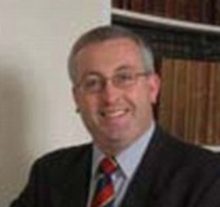 In October 2010, one of the Bridgend coroners, Peter Maddox (left), presided over the inquest of Christopher Ward (29),who hanged himself in the nearby village of Betws after having been prescribed Citalopram. He had not taken any alcohol or illicit drugs. Mr Maddox delivered a verdict of suicide, saying: “There was a lack of anything in the system that would have altered his judgement; you would expect him to understand what he was doing and the consequences.”
In October 2010, one of the Bridgend coroners, Peter Maddox (left), presided over the inquest of Christopher Ward (29),who hanged himself in the nearby village of Betws after having been prescribed Citalopram. He had not taken any alcohol or illicit drugs. Mr Maddox delivered a verdict of suicide, saying: “There was a lack of anything in the system that would have altered his judgement; you would expect him to understand what he was doing and the consequences.”
 In December 2010, one of the most high-profile inquests featuring Citalopram was held in Birmingham. In the months before she hanged herself in the attic of her home in October 2009, 42-year-old Yvonne Woodley (right) visited six different GPs in nine visits to Solihull’s Yew Tree Medical Centre. Her dosage of Citalopram was increased, and she became more agitated.
In December 2010, one of the most high-profile inquests featuring Citalopram was held in Birmingham. In the months before she hanged herself in the attic of her home in October 2009, 42-year-old Yvonne Woodley (right) visited six different GPs in nine visits to Solihull’s Yew Tree Medical Centre. Her dosage of Citalopram was increased, and she became more agitated.
Yvonne’s mother said: “The change in my daughter was remarkable. She was a stable, happy, calm person but in three weeks the decline was rapid to a woman who was trembling, had panic attacks and wouldn’t make eye contact. She was like a zombie. The eyes were blank and flat and there was no emotional response. Yvonne displayed every single side-effect of the drug.”
Professor David Healy told the inquest: “I believe the drug was likely to have played a part. Yvonne was clearly suffering adverse effects of the drug and it was this that put her at risk. If treatment was contributing, then putting the dosage up wasn’t the thing to do. This is the second inquest regarding this drug I have attended in the past five months. There have also been homicide cases involving it.”
Even Dr Christopher Muldoon, representing manufacturers Lundbeck, admitted that Citalopram “could cause someone to take their life who had not previously thought of doing so.” However, he added: “I don’t think this was the case with Mrs Woodley as I think it was her underlying depressive illness.”
In spite of the overwhelming evidence, coroner Aidan Cotter (left) stopped short of finding the drug culpable for Yvonne’s death. He concluded: “I cannot be sure of what happened and Mrs Woodley’s death may have been an accident as she made a cry for help. I will write to the Medicines and Healthcare Products Regulatory Agency (MHRA) asking if more research is needed into the drug.”
In March 2011, an inquest heard that Peter Needham (40) was found hanged at his home in November 2010. Described as a sociable and popular man, Peter had been prescribed Duloxetine to deal with a tingling sensation in his foot. After voicing concerns about feeling low, he was prescribed a different antidepressant, Sertraline, five days before his death.
 Coroner Simon Nelson (left) recorded a narrative verdict that “he had taken his own life while the balance of his mind was disturbed.” But he said it was “difficult to ignore” the link between his taking the medication and his death. Mr Nelson then said he would write to the Royal Pharmaceutical Society and British Medical Association to raise his concerns about prescription-medicine labelling. Holding up a page filled with small-print instructions, he said: “To the untrained eye and in particular the first-time user this would be completely off-putting. To discover those warnings half way down the small print is wholly inappropriate. The manner in which these warnings are brought to the attention of users has to be reconsidered.”
Coroner Simon Nelson (left) recorded a narrative verdict that “he had taken his own life while the balance of his mind was disturbed.” But he said it was “difficult to ignore” the link between his taking the medication and his death. Mr Nelson then said he would write to the Royal Pharmaceutical Society and British Medical Association to raise his concerns about prescription-medicine labelling. Holding up a page filled with small-print instructions, he said: “To the untrained eye and in particular the first-time user this would be completely off-putting. To discover those warnings half way down the small print is wholly inappropriate. The manner in which these warnings are brought to the attention of users has to be reconsidered.”
 One of the many inquests in which West Midlands coroner Robin Balmain (left) ignored the part played by antidepressants occurred in July 2011. In this particular case, 55-year-old unemployed teacher David Smith had died after stabbing himself several times. Although a toxicology report revealed that “Mr Smith’s body contained high concentrations of antidepressants”, Mr Balmain’s verdict was suicide, as he ruled that David “knew exactly what he was doing.”
One of the many inquests in which West Midlands coroner Robin Balmain (left) ignored the part played by antidepressants occurred in July 2011. In this particular case, 55-year-old unemployed teacher David Smith had died after stabbing himself several times. Although a toxicology report revealed that “Mr Smith’s body contained high concentrations of antidepressants”, Mr Balmain’s verdict was suicide, as he ruled that David “knew exactly what he was doing.”
At the inquest of Jason Edwards (40) in October 2011, his partner Paula related how Jason was having trouble sleeping, and was prescribed antidepressants. She told the court: “Overnight he seemed to change. He was restless and agitated. He said he felt like there was adrenaline sawing around his body.” She added that she wanted her partner to get off the medication. She had researched the drugs and found that “psychosis and paranoia were recognised side-effects.”
His GP changed his medication to a different antidepressant, but his mental state worsened and, in March 2011, Jason jumped from Beachy Head. Mr Craze’s deputy coroner, Joanna Pratt (left), ignored all of this first-hand evidence when she delivered a verdict of suicide.
 In February 2012, an inquest in West London heard that 18-year-old student Charlie Suen (right) had been referred to local mental health services, but had to wait 3½ months for an appointment. He was found hanged at home in May 2010, eleven days after starting to take Citalopram. Although Charlie’s parents questioned the prescription of a drug which is “blacklisted for under 18s”, his GP maintained that it was “appropriate”. A unattributed report in the local newspaper states that: “Citalopram is used to treat a variety of mental health problems and can improve symptoms such as depression and anxiety. In the early stages of treatment Citalopram may intensify depression and suicidal feelings, increasing the risk of self-harm or suicide, but as the drug starts to work the risks decrease.” The source of this misleading information is not revealed, but it may well have emanated from Lundbeck.
In February 2012, an inquest in West London heard that 18-year-old student Charlie Suen (right) had been referred to local mental health services, but had to wait 3½ months for an appointment. He was found hanged at home in May 2010, eleven days after starting to take Citalopram. Although Charlie’s parents questioned the prescription of a drug which is “blacklisted for under 18s”, his GP maintained that it was “appropriate”. A unattributed report in the local newspaper states that: “Citalopram is used to treat a variety of mental health problems and can improve symptoms such as depression and anxiety. In the early stages of treatment Citalopram may intensify depression and suicidal feelings, increasing the risk of self-harm or suicide, but as the drug starts to work the risks decrease.” The source of this misleading information is not revealed, but it may well have emanated from Lundbeck.
Coroner Elizabeth Pygott chose to ignore altogether the effects of Citalopram when she concluded: “It is clear there had been a delay in Charlie being seen but I have to say it’s too remote to say that the delay was actually directly causative of his death.”
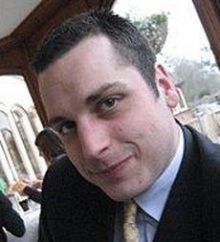 In April 2011, 30-year-old Chris Benning (right) was found hanged in woods in Buckinghamshire, His inquest in February 2012 heard his death described as “out of the blue”, and that, in the weeks prior to his death, Chris had been prescribed Citalopram. His sister Juliet said: “Although we are aware that there may be little statistical evidence to prove the antidepressant Citalopram may lead to a heightened risk of suicide, we have gathered enough anecdotal evidence to prove otherwise. We would ask that any prescription of the drug made by those in the health authorities is done so with a warning of these risks.”
In April 2011, 30-year-old Chris Benning (right) was found hanged in woods in Buckinghamshire, His inquest in February 2012 heard his death described as “out of the blue”, and that, in the weeks prior to his death, Chris had been prescribed Citalopram. His sister Juliet said: “Although we are aware that there may be little statistical evidence to prove the antidepressant Citalopram may lead to a heightened risk of suicide, we have gathered enough anecdotal evidence to prove otherwise. We would ask that any prescription of the drug made by those in the health authorities is done so with a warning of these risks.”
![]()
 Ignoring Juliet’s testimony while delivering a verdict of suicide, Coroner Richard Hulett (left) concluded that the support that Chris had received from mental health services was “very thorough” and that “there were no shortcomings in his care.”
Ignoring Juliet’s testimony while delivering a verdict of suicide, Coroner Richard Hulett (left) concluded that the support that Chris had received from mental health services was “very thorough” and that “there were no shortcomings in his care.”
 In March 2012, an “expert” attended the inquest of 29-year-old Catherine Yannakopoulos (right), who was found by her fiancé, hanged at their Somerset home in November 2010. Catherine suffered from MS, and was prescribed Escitalopram when she became anxious about her forthcoming wedding. Following an adverse reaction which induced agitation and paranoia, several other psychotropic drugs were added.
In March 2012, an “expert” attended the inquest of 29-year-old Catherine Yannakopoulos (right), who was found by her fiancé, hanged at their Somerset home in November 2010. Catherine suffered from MS, and was prescribed Escitalopram when she became anxious about her forthcoming wedding. Following an adverse reaction which induced agitation and paranoia, several other psychotropic drugs were added.
At Catherine’s inquest, her father Andonis raised concerns about the medication that Catherine had been prescribed before her death and the potentially fatal side effects it could have had. 
However, Malcolm Lader (right) from Kings College, who has long-standing financial links to Lundbeck and other manufacturers of SSRIs, said: “On the balance of probabilities I would think that MS was the basis of the suicidal feelings, rather than the medication. That factor is much further down my list than a serious life-threatening condition of this sort. I don’t think anything else could have been done. There was a certain inevitably about this suicide, I’m afraid to say.”
Coroner Maria Voisin (left) concluded: “Catherine took her own life while the balance of her mind was disturbed.”
Earlier this year, Andonis included a scathing report on Catherine’s inquest as part of a submission to the Scottish Parliament, in which he described the coroner’s verdict as “despicable”.
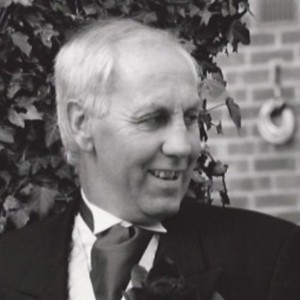 In September 2011, 63-year-old self-employed electrician Brian Palmer (right) shot himself at his home in Littlehampton. At his inquest in March 2012, his widow Jennifer told how Brian became worried about finances and consulted his GP. He was prescribed Fluoxetine and Zopiclone. She said: “I noticed a change in him almost straight after taking the pills. I asked to see the box in the days before but he said he couldn’t find it. I found it a few days after his death and it listed all the changes I had seen in him… We have had to learn the hard way. I can’t bear to think of any other families going through this kind of trauma.”
In September 2011, 63-year-old self-employed electrician Brian Palmer (right) shot himself at his home in Littlehampton. At his inquest in March 2012, his widow Jennifer told how Brian became worried about finances and consulted his GP. He was prescribed Fluoxetine and Zopiclone. She said: “I noticed a change in him almost straight after taking the pills. I asked to see the box in the days before but he said he couldn’t find it. I found it a few days after his death and it listed all the changes I had seen in him… We have had to learn the hard way. I can’t bear to think of any other families going through this kind of trauma.”
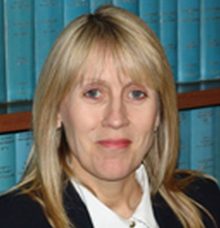 Recording a narrative verdict, coroner Penelope Schofield (left) concluded that: “He took his own life following the prescription of the drugs Fluoxetine and Zopiclone.” The coroner said she would be writing to the Medical Centre which treated Brian “to advise GPs there to warn all patients of the potential side-effects any prescribed drug can have.”
Recording a narrative verdict, coroner Penelope Schofield (left) concluded that: “He took his own life following the prescription of the drugs Fluoxetine and Zopiclone.” The coroner said she would be writing to the Medical Centre which treated Brian “to advise GPs there to warn all patients of the potential side-effects any prescribed drug can have.”
 In November 2012, the inquest of 64-year-old company director Colin Dallas (right) was held in North Yorkshire. In March, he had shot himself at his home near Harrogate. His widow told the court that, in July 2011, he had been prescribed antidepressants, and until his death the prescription was changed several times because he was unhappy with the side-effects that he was experiencing. He often lowered or stopped taking his prescription. In the days before his death, Colin increasingly suffered from psychotic attacks and paranoid delusions.
In November 2012, the inquest of 64-year-old company director Colin Dallas (right) was held in North Yorkshire. In March, he had shot himself at his home near Harrogate. His widow told the court that, in July 2011, he had been prescribed antidepressants, and until his death the prescription was changed several times because he was unhappy with the side-effects that he was experiencing. He often lowered or stopped taking his prescription. In the days before his death, Colin increasingly suffered from psychotic attacks and paranoid delusions.
Coroner Geoff Fell (left) recorded a verdict of suicide. He decided not to acknowledge either the side-effects or the withdrawal symptoms of the drugs when he said that “the failure of Mr Dallas to take his antidepressants was a contributory factor.”
In March 2013, ten years on from his description of Seroxat as a “dangerous drug”, Geraint Williams presided over the inquest of Christine Guise, a 64-year-old retired NHS worker. Mr Williams, who by this time had moved to Worcestershire, heard that in November 2012, while staring at her steering wheel, Mrs Guise drove her car at a constant speed straight through Give Way markings into the path of an oncoming lorry. A post-mortem report found that she “was not under the influence of drink or drugs, but therapeutic levels of the anti-depressant Citalopram were found.”
Choosing to ignore completely the fact that Citalopram may have caused her irrational behaviour, Mr Williams concluded that: “Mrs Guise was driving her vehicle quite deliberately when it went through the junction which led to the crash. Therefore I find she died as a result of accidental death.”
 An inquest in January 2014 heard that Serena, wife of 24-year-old ex-soldier Lee Bonsall (right), found him hanged at their home in Tenby in March 2012. His family that believed he had been suffering from PTSD since his time in Afghanistan. Shortly before his death, Lee visited a local GP, who gave him a repeat prescription of Citalopram.
An inquest in January 2014 heard that Serena, wife of 24-year-old ex-soldier Lee Bonsall (right), found him hanged at their home in Tenby in March 2012. His family that believed he had been suffering from PTSD since his time in Afghanistan. Shortly before his death, Lee visited a local GP, who gave him a repeat prescription of Citalopram.
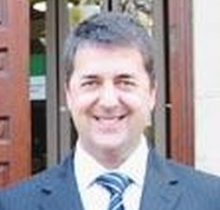 Although coroner Mark Layton (left) stopped short of holding Citalopram responsible for Lee’s death in his narrative verdict, he said he would “petition the Minister for Health over the practice of allowing repeat prescriptions for the antidepressant drug Citalopram.”
Although coroner Mark Layton (left) stopped short of holding Citalopram responsible for Lee’s death in his narrative verdict, he said he would “petition the Minister for Health over the practice of allowing repeat prescriptions for the antidepressant drug Citalopram.”
 In March 2014, the inquest of 65-year-old Susan Poore (right) was held in Norfolk. Mrs Poore had been struck by a train in May 2013. Five weeks earlier, she had been prescribed Fluoxetine following an adverse reaction to a flu vaccination. Her family said she had been acting completely out of character in the lead-up to the tragedy, and that the medication had changed her personality.
In March 2014, the inquest of 65-year-old Susan Poore (right) was held in Norfolk. Mrs Poore had been struck by a train in May 2013. Five weeks earlier, she had been prescribed Fluoxetine following an adverse reaction to a flu vaccination. Her family said she had been acting completely out of character in the lead-up to the tragedy, and that the medication had changed her personality.
 Recently-appointed coroner Jacqueline Lake (left) said that it was a “proper” decision to prescribe the drugs, as Mrs Poore had displayed signs of depression before she began the course of medication. But she added that her mental health deteriorated after the prescription, and voiced concern that patients were not given enough warning of “possible side-effects of taking these medications in the initial stages.”
Recently-appointed coroner Jacqueline Lake (left) said that it was a “proper” decision to prescribe the drugs, as Mrs Poore had displayed signs of depression before she began the course of medication. But she added that her mental health deteriorated after the prescription, and voiced concern that patients were not given enough warning of “possible side-effects of taking these medications in the initial stages.”
In a short narrative conclusion, Mrs Lake said: “Mrs Poore stepped in front of a train and suffered fatal injuries. At the time Mrs Poore was taking antidepressant medication.” Mrs Lake then submitted a Prevention of Future Deaths (PFD) report to the CEO of NHS England, expressing her concerns about the inadequacy of the PIL.
 In May 2014, 61-year-old Jamie Douglas-Home (right), racehorse trainer and nephew of a former prime minister, shot himself while at home in Oxfordshire. At the time he was attempting to write a book on horse racing, but reported feeling tired and suffering from a lack of drive. In the previous month, he had consulted a GP who prescribed him Escitalopram. He began to feel suicidal, and consulted a psychiatrist at the Nightingale Hospital, who told the inquest in August 2014 that he offered Jamie a bed, which was declined. He added: “I explained that some antidepressant medicine could rarely cause an increase in suicidality, but that was more in young people and women.”
In May 2014, 61-year-old Jamie Douglas-Home (right), racehorse trainer and nephew of a former prime minister, shot himself while at home in Oxfordshire. At the time he was attempting to write a book on horse racing, but reported feeling tired and suffering from a lack of drive. In the previous month, he had consulted a GP who prescribed him Escitalopram. He began to feel suicidal, and consulted a psychiatrist at the Nightingale Hospital, who told the inquest in August 2014 that he offered Jamie a bed, which was declined. He added: “I explained that some antidepressant medicine could rarely cause an increase in suicidality, but that was more in young people and women.”
Jamie’s sister Sarah Dent told coroner Peter Clark that her brother had felt worse after starting his medication and questioned the logic of leaving the decision of whether to admit her brother with him, due to his mental state. Before recording a verdict of suicide, the coroner told Mrs Dent: “His apparent preference was to return home. It is clear from the statements that there is this issue that you feel slightly worse before you are meant to feel better.”
 In October 2014, the inquest of Brett Robertshaw (right) took place in Blackpool. Brett was a 21-year-old musician who had taken his life in July. The inquest heard that Brett had written a final blog on his website, stating that he had intended to take his life by inhaling helium.
In October 2014, the inquest of Brett Robertshaw (right) took place in Blackpool. Brett was a 21-year-old musician who had taken his life in July. The inquest heard that Brett had written a final blog on his website, stating that he had intended to take his life by inhaling helium.
On an earlier blog, Brett had written about his depression: “I finally decided to go to the doctor’s about it earlier this year. I was given antidepressants, referred for counselling, referred to the psychiatrist, and even contacted by the ‘Crisis team’.” Brett then went on to describe how the antidepressants made him feel: “Did any of this help? Not at all. I felt worse. I had horrendous nausea from the medication, had no appetite, I was getting even less sleep than usual (An hour a day if I was lucky) and I was feeling even more suicidal than ever before, because of worry about all the appointments that I had to go to, and having to talk to people about this. I eventually got to a point where I was going 3-4 days at a time without any sleep at all, because I was worrying so much, so I just abruptly stopped everything in fear that it would just get rapidly worse if I didn’t do so. I felt like a lost cause, like I couldn’t be helped. I suppose that I thought there was no way at all of me ever shifting this, because any attempt to get better seemed to go the opposite way and make me feel worse.”
Coroner Claire Doherty delivered a verdict of suicide, saying that “he’d been grappling with a lot of problems for a long time.” After the inquest, Brett’s aunt said: “We’d like people prescribed antidepressants to be kept an eye on, especially if doctors know their family and that there are other things going on.”
 In November 2014, 15-year-old schoolgirl Jade Kosanlavit (right) was struck by a train at Port Sunlight. Six weeks earlier, she had been prescribed Fluoxetine. At her inquest in February 2015, Jade’s uncle said that her family had concerns about the medication. He cited research which he said showed that Fluoxetine had an increased suicide risk of 64%. He added: “I think the whole family just find it difficult to understand that medication with this increased risk of suicide as an outcome is still being given in spite of this sort of evidence suggesting that children or adolescents can be pushed over the brink.”
In November 2014, 15-year-old schoolgirl Jade Kosanlavit (right) was struck by a train at Port Sunlight. Six weeks earlier, she had been prescribed Fluoxetine. At her inquest in February 2015, Jade’s uncle said that her family had concerns about the medication. He cited research which he said showed that Fluoxetine had an increased suicide risk of 64%. He added: “I think the whole family just find it difficult to understand that medication with this increased risk of suicide as an outcome is still being given in spite of this sort of evidence suggesting that children or adolescents can be pushed over the brink.”
Coroner Andre Rebello (left) recorded a verdict that Jade took her own life while suffering from a depressive illness. He said: “I can’t say that without medication, this wouldn’t have happened. What I can say is that it happened in spite of the medication.”
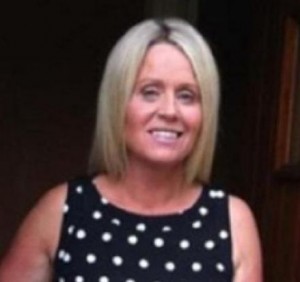 In February 2014, 42-year-old Lorna Clymo (right) died after falling from the top floor of a multi-storey car park in Keighley town centre. In the weeks before her death, Lorna had begun to have suicidal thoughts. She was admitted to hospital, where doctors decided to change her antidepressants.
In February 2014, 42-year-old Lorna Clymo (right) died after falling from the top floor of a multi-storey car park in Keighley town centre. In the weeks before her death, Lorna had begun to have suicidal thoughts. She was admitted to hospital, where doctors decided to change her antidepressants.
During her inquest in January 2015, Lorna’s sister expressed concerns that the change of medication could have influenced what happened to her sister. She said: “She was sent home to wean herself off her medication. She should have been monitored in hospital. We feel as if she was neglected, there was a lack of care. The community nurses rang her but how can you see down a telephone?”
 Coroner Martin Fleming (left) recorded a verdict of suicide, concluding that after hearing medical evidence, he was satisfied that “the changeover of medication had not played a part in her death” and adding: “I’m satisfied she did receive the best of care from doctors and they factored into the equation what she had wanted – to be at home.”
Coroner Martin Fleming (left) recorded a verdict of suicide, concluding that after hearing medical evidence, he was satisfied that “the changeover of medication had not played a part in her death” and adding: “I’m satisfied she did receive the best of care from doctors and they factored into the equation what she had wanted – to be at home.”
 28-year-old teaching assistant Joanne Norris (right) was a month away from giving birth to her second child when, in March 2014, she drove to Witham Station in Essex and walked into the path of a train. Joanne had been taking Venlafaxine but stopped when she became pregnant. She was prescribed Diazepam for morning sickness, and was then re-prescribed Venlafaxine after suffering unbearable withdrawal symptoms.
28-year-old teaching assistant Joanne Norris (right) was a month away from giving birth to her second child when, in March 2014, she drove to Witham Station in Essex and walked into the path of a train. Joanne had been taking Venlafaxine but stopped when she became pregnant. She was prescribed Diazepam for morning sickness, and was then re-prescribed Venlafaxine after suffering unbearable withdrawal symptoms.
At Joanne’s inquest in February 2015, her GP was asked by a lawyer: “Isn’t it the case that in the early stages of taking Venlafaxine it can cause an increased risk of self-harm or suicidal thoughts? That is an established side-effect of the medication in some cases. It was irrelevant that she had taken it over the years. Each period of taking it is different.”
The GP replied that he did not consider there to be a risk due to the reduced amount prescribed, as well as Joanne’s previous experience taking the medication, but admitted that he did not warn her of the increased risk.
Returning a verdict of suicide, coroner Michelle Brown added: “The lack of adequate recording in the GPs’ notes meant the evidence was insufficient to ascertain whether she stopped taking the drugs of her own accord or because she was advised to do so. There is also insufficient evidence to show whether restarting the Venlafaxine contributed to her death, or whether the Diazepam was prescribed for sickness or anxiety. However these were clinical decisions made by medical professionals and outside the remit of this inquest.”
 64-year-old Margaret Tisdale (right) was an internationally renowned scientist who, after retirement, did a lot of demanding voluntary work in the Bedfordshire village where she lived. In April 2015, Margaret fell from her bedroom window on to the patio. On her bedside table, next to her Citalopram tablets, was a book about coping with stress.
64-year-old Margaret Tisdale (right) was an internationally renowned scientist who, after retirement, did a lot of demanding voluntary work in the Bedfordshire village where she lived. In April 2015, Margaret fell from her bedroom window on to the patio. On her bedside table, next to her Citalopram tablets, was a book about coping with stress.
At Margaret’s inquest in October 2015, her sister Linda raised concerns about the side effects of Citalopram. She said: “I felt that she wasn’t depressed, but was instead very anxious and stressed. I was concerned about the Citalopram she was prescribed, when I looked up the side effects. I don’t think she knew how serious the side effects could be.”
 Linda’s concerns were crudely dismissed by coroner Tom Osborne (left), who replied: “If you went online and read the side effects of almost any medicine, you would never want to take any medication at all.” Mr Osborne delivered a verdict of suicide, saying that: “The person who took their own life that day was not Margaret – she had been overtaken by stress and distress.”
Linda’s concerns were crudely dismissed by coroner Tom Osborne (left), who replied: “If you went online and read the side effects of almost any medicine, you would never want to take any medication at all.” Mr Osborne delivered a verdict of suicide, saying that: “The person who took their own life that day was not Margaret – she had been overtaken by stress and distress.”
 In January 2015, 18-year-old Jessica Monks (right) stepped in front of a train at Twyford, Berkshire. By the time that the inquest was heard in October 2015, details had already been revealed by her MP Steve Baker in a parliamentary debate on epilepsy.
In January 2015, 18-year-old Jessica Monks (right) stepped in front of a train at Twyford, Berkshire. By the time that the inquest was heard in October 2015, details had already been revealed by her MP Steve Baker in a parliamentary debate on epilepsy.
 Mr Baker (left) had told MPs that: “Put simply, it seems that the epilepsy medication, which was necessary, caused psychotic side effects, which were exacerbated by antidepressants that were prescribed with the best intentions. Jessica therefore spiralled into the situation that tragically led to her death.”
Mr Baker (left) had told MPs that: “Put simply, it seems that the epilepsy medication, which was necessary, caused psychotic side effects, which were exacerbated by antidepressants that were prescribed with the best intentions. Jessica therefore spiralled into the situation that tragically led to her death.”
 However, Mr Baker’s evidence was contradicted by coroner Peter Bedford (right), who concluded: “There is no evidence to suggest anything that could have or might have been done differently to prevent what happened that day. Evidence of any link between the drug she was taking and suicide is inconclusive.”
However, Mr Baker’s evidence was contradicted by coroner Peter Bedford (right), who concluded: “There is no evidence to suggest anything that could have or might have been done differently to prevent what happened that day. Evidence of any link between the drug she was taking and suicide is inconclusive.”
 In April 2016, Peter Bedford presided over the inquest of 38-year-old international marketing executive Elena Levchenko (left). The court was told that Elena was struggling to juggle the demands of her job with raising her young daughter. In October 2015, Elena saw her GP who prescribed her Citalopram, even though she had never shown any signs of depression. Two days later, her mother found her hanged in the garage of her home.
In April 2016, Peter Bedford presided over the inquest of 38-year-old international marketing executive Elena Levchenko (left). The court was told that Elena was struggling to juggle the demands of her job with raising her young daughter. In October 2015, Elena saw her GP who prescribed her Citalopram, even though she had never shown any signs of depression. Two days later, her mother found her hanged in the garage of her home.
When her ex-husband questioned whether the medication prescribed to Elena could have caused the psychotic behaviour that influenced her death, Mr Bedford replied that, “as the pills had only been prescribed two days before her death, it was unlikely to have changed her behaviour at all.” Mr Bedford concluded that “she intended to take her own life, while suffering from depression”, even though there was no evidence that Elena had ever been depressed.
In January 2016, an academically successful 18-year-old “young man” went to see his GP in Cambridgeshire. The GP set up a 15-minute telephone interview with a local psychiatrist, who suggested that the GP should give the young man a prescription of Citalopram. 18 days later, the young man was struck by a train at his local station.
His inquest in June 2016 heard that he had further appointments with his GP, where he “reported no improvements, despite the course of Citalopram”.  Concluding the inquest with a verdict of suicide, coroner Belinda Cheney (left) highlighted failings in the way the young man’s case was dealt with: “Nobody told him about the side-effects of the antidepressants he took, and he had no stable contact, which didn’t help his feelings of low self worth.”
Concluding the inquest with a verdict of suicide, coroner Belinda Cheney (left) highlighted failings in the way the young man’s case was dealt with: “Nobody told him about the side-effects of the antidepressants he took, and he had no stable contact, which didn’t help his feelings of low self worth.”
Following the inquest, the coroner submitted a PFD report in which she stated her concern that the young man “received no advice about the contraindications of the medication and critically that he may well feel worse before he felt better and may feel more suicidal. In either event he should have been told who to call to get further assistance.”
 66-year-old Michael Geldard (right) had been a successful and popular teacher. After his retirement, he remained very active, taking part in endurance challenges, until he damaged his knee in an accident on his mountain bike. For the resultant pain, Michael’s GP prescribed Tramadol, and also Amitriptyline, which is a tricyclic antidepressant, a drug that often induces depression when prescribed off-label for pain relief.
66-year-old Michael Geldard (right) had been a successful and popular teacher. After his retirement, he remained very active, taking part in endurance challenges, until he damaged his knee in an accident on his mountain bike. For the resultant pain, Michael’s GP prescribed Tramadol, and also Amitriptyline, which is a tricyclic antidepressant, a drug that often induces depression when prescribed off-label for pain relief.
At his inquest in July 2016, Michael’s ex-wife Helena said that Michael had asked repeatedly for help from the doctors and she felt they had failed to prevent his death. She said that she was concerned about the over-prescription of pain relief, as he had been prescribed three lots of Amitriptyline, which he had asked not to be prescribed any more. Eventually, Michael’s prescription was changed to a large dosage of codeine.
In January 2016, Michael told his doctor that he was having problems reducing his intake of codeine, and was frustrated and anxious. His doctor prescribed him Citalopram. Michael reported his suicidal feelings to the doctor and asked if he could stop taking Citalopram. Later that month, Michael hanged himself in his garage.
Helena asked Somerset coroner Tony Williams if it was possible that he had taken his life while in a medication-induced psychotic state. Instead of giving an affirmative response, the coroner recorded a narrative verdict, saying that Michael had intentionally taken his own life at a time when he was seeking to reduce his use of codeine, and had been prescribed Citalopram eleven days prior to his death.
 On February 13th 2016, 50-year-old Margaret MacDermott (right) went missing from her home in Newcastle. The following month, her body was recovered from the River Tyne. In December 2016, her inquest heard from her GP practice that Margaret had taken tablets for anxiety and depression for about six years and that, two months before her death, she had her antidepressants increased after a diagnosis of multiple sclerosis. The inquest was also told that: “There is medical opinion suggesting such tablets can have a ‘paradoxical’ effect – increasing risk of suicidal behaviour – but only in under-25s.”
On February 13th 2016, 50-year-old Margaret MacDermott (right) went missing from her home in Newcastle. The following month, her body was recovered from the River Tyne. In December 2016, her inquest heard from her GP practice that Margaret had taken tablets for anxiety and depression for about six years and that, two months before her death, she had her antidepressants increased after a diagnosis of multiple sclerosis. The inquest was also told that: “There is medical opinion suggesting such tablets can have a ‘paradoxical’ effect – increasing risk of suicidal behaviour – but only in under-25s.”
 It is surprising that this palpably untrue statement went apparently unchallenged by coroner Karen Dilks (left), who returned a narrative conclusion, saying: “Ms MacDermott died due to her own actions, in that she took herself to the bridge whilst suffering from anxiety and depression.”
It is surprising that this palpably untrue statement went apparently unchallenged by coroner Karen Dilks (left), who returned a narrative conclusion, saying: “Ms MacDermott died due to her own actions, in that she took herself to the bridge whilst suffering from anxiety and depression.”
In March 2017, the inquest of 18-year-old Courtney Davis took place at Gloucester Coroner’s Court. In April 2016, Courtney had been found hanged in her bedroom after writing “to die would be an awfully big adventure” on the wall. The court was told that “she had support from a number of agencies”, although she did not always attend appointments. She was not considered suicidal. A post-mortem on Courtney found that she had been taking the medication prescribed to her. This included the sedative Zopiclone and the opioid Tramadol, as well as two SSRI antidepressants – Citalopram and Sertraline.
In spite of this evidence, coroner Caroline Saunders pronounced: “I am satisfied neither medication nor alcohol contributed to her death.”
 22-year-old multi-linguist Oliver Hare (right) worked as an English teacher in Shanghai, but was unhappy in his job. On a previous visit home, he had seen a GP and had been prescribed Citalopram, although he decided not to take them at the time. In February 2014, Oliver was discovered hanging from a window at home in Worthing. At his inquest in May 2017, his father said: “Because his mood didn’t seem to have improved, he tried taking the tablets. He only took four days’ worth.”
22-year-old multi-linguist Oliver Hare (right) worked as an English teacher in Shanghai, but was unhappy in his job. On a previous visit home, he had seen a GP and had been prescribed Citalopram, although he decided not to take them at the time. In February 2014, Oliver was discovered hanging from a window at home in Worthing. At his inquest in May 2017, his father said: “Because his mood didn’t seem to have improved, he tried taking the tablets. He only took four days’ worth.”
 Delivering a verdict of suicide, coroner Elisabeth Bussey-Jones (left) ignored the fact that Oliver had never been suicidal until he took drugs linked to suicide, and declared: “In light of the mood of the deceased that has been described and the manner by which his body was found I am satisfied that he intended to take his own life.”
Delivering a verdict of suicide, coroner Elisabeth Bussey-Jones (left) ignored the fact that Oliver had never been suicidal until he took drugs linked to suicide, and declared: “In light of the mood of the deceased that has been described and the manner by which his body was found I am satisfied that he intended to take his own life.”
 In September 2017, the inquest of 17-year-old Chloe Hillier (right) took place in Blackpool. Shortly after giving birth to a son, Chloe became distressed due to the problematic behaviour of her boyfriend. She saw her GP who prescribed her Citalopram, in contravention of NICE Guidelines. In March 2017, Chloe was found hanged in a local park.
In September 2017, the inquest of 17-year-old Chloe Hillier (right) took place in Blackpool. Shortly after giving birth to a son, Chloe became distressed due to the problematic behaviour of her boyfriend. She saw her GP who prescribed her Citalopram, in contravention of NICE Guidelines. In March 2017, Chloe was found hanged in a local park.
 Recording a verdict of suicide, coroner Alan Wilson (left) ignored the fact that Chloe had been prescribed a drug deemed unsuitable for children because of the heightened risk of suicide, but decided: “It is clear that her relationship was having an impact on her and the issues contributed to her intention to end her life.”
Recording a verdict of suicide, coroner Alan Wilson (left) ignored the fact that Chloe had been prescribed a drug deemed unsuitable for children because of the heightened risk of suicide, but decided: “It is clear that her relationship was having an impact on her and the issues contributed to her intention to end her life.”
 In July 2017, 15-year-old Becky Romero (right) was found hanged at her home in Bristol. She had been treated by CAMHS for several years. Her inquest in December 2017 heard that, after attempting an overdose in June, Becky was admitted to a local children’s hospital. There were no appropriate places available, so Becky was sent to the nearest unit for adolescents that where there was room for her, 125 km from home. Four weeks later, Becky was told at short notice that she was going home. She told her parents that she was “feeling side effects of the new medication” that she had been given before she left the unit.
In July 2017, 15-year-old Becky Romero (right) was found hanged at her home in Bristol. She had been treated by CAMHS for several years. Her inquest in December 2017 heard that, after attempting an overdose in June, Becky was admitted to a local children’s hospital. There were no appropriate places available, so Becky was sent to the nearest unit for adolescents that where there was room for her, 125 km from home. Four weeks later, Becky was told at short notice that she was going home. She told her parents that she was “feeling side effects of the new medication” that she had been given before she left the unit.
Coroner Maria Voisin expressed concerns that Becky had just been prescribed a new drug, Fluoxetine, which could cause increased agitation and increased risk of self-harm. The coroner said that guidelines state that when the drug is prescribed in young people, they should be carefully monitored for side effects but, days after it was given to Becky, she was sent home and did not see a mental health professional face-to-face again in the two weeks before her death.
Following the inquest, the coroner submitted a detailed PFD report, which made no mention whatsoever of Fluoxetine or any other medication prescribed to Becky.
An inquest in January this year heard that apprentice engineer Nicholas Afzal (20) lost his life when he was struck by a train at Bramhall Station. Nicholas had been medicated for obsessive-compulsive disorder (OCD), but told his parents that he wanted to try and manage it without medication.
But, by June 2017, the family decided that more help was needed. Nicholas attended two appointments at the Priory in Altrincham , where he was prescribed Sertraline, Citalopram and Pregabalin. Nicholas died just two days after starting to take the three drugs, all of which come with warnings of suicidal ideation.
As coroner Alison Mutch (left) didn’t appear to want to make the link, she struggled to find a reason why Nicholas should have taken his life. She settled for: “Nicholas felt it was the time for him and did not wish to go on anymore.”
 In September 2014, 43-year-old Rubina Khan held her 10-year-old son Amaar as they clambered down from the platform on to the tracks at Slough Station (right), and lay down with him before they were struck by a London-bound train. More than 3½ years later, their inquests took place in May of this year. The court heard that Rubina became anxious when her estranged husband from whom she had been separated for about six years, said that he would be returning to Britain from Pakistan to be with them once more. She went to see her GP, who prescribed antidepressants. Following this, Rubina began to self-harm, and expressed fear that her worsening mental state would lead to social services taking her children. She was then prescribed anti-anxiety drugs, and continued to take both forms of medication until the time of her death. On two occasions, she was admitted to a local psychiatric hospital. In August, Rubina began living with her husband again. Six days before her death, she told her GP she was feeling depressed, and was prescribed a higher dose of antidepressants.
In September 2014, 43-year-old Rubina Khan held her 10-year-old son Amaar as they clambered down from the platform on to the tracks at Slough Station (right), and lay down with him before they were struck by a London-bound train. More than 3½ years later, their inquests took place in May of this year. The court heard that Rubina became anxious when her estranged husband from whom she had been separated for about six years, said that he would be returning to Britain from Pakistan to be with them once more. She went to see her GP, who prescribed antidepressants. Following this, Rubina began to self-harm, and expressed fear that her worsening mental state would lead to social services taking her children. She was then prescribed anti-anxiety drugs, and continued to take both forms of medication until the time of her death. On two occasions, she was admitted to a local psychiatric hospital. In August, Rubina began living with her husband again. Six days before her death, she told her GP she was feeling depressed, and was prescribed a higher dose of antidepressants.
Not for the first time in his career, coroner Peter Bedford opted to ignore crucial evidence. Concluding that “professionals could not have prevented her death”, his verdict was that Rubina had died by suicide and that Amaar had been unlawfully killed.
In February this year, 40-year-old Owen Street (40) hanged himself at his home in High Wycombe, and was found by his wife. He had left her a note. Owen worked for the NHS as a computer engineer. His inquest in May heard from his GP, who said that Owen had a history of depression, and was prescribed Citalopram.
Returning a verdict of suicide, coroner Anne Davies said the levels of Citalopram in Owen’s blood “were above therapeutic levels, but did not contribute to his death.” She added: “I think the contents of his note make it clear that he really did decide he was going to end his life.”
These reports are just some of those that I have found during six years of research. There are examples of over-prescribing and mis-prescribing to be found in all parts of the country. Coroners are reluctant to criticise this. There is no doubt that Citalopram and other antidepressants can and do cause many of those who swallow them to take their lives. Coroners are reluctant to admit this.
There may well have been some inquests during the past ten years where a psychotropic drug was deemed responsible for a self-inflicted death, but the majority of inquests go unreported in local or national newspapers. The inquest of my son was one of those, although it could have been very different. Chronologically, my son’s inquest took place after the admonishment of Ian Smith, but before the inquest of Yvonne Woodley.
With the permission of the coroner’s office, I sent copies of the GP’s report and the coroner’s post-mortem report to an eminent pharmacologist with whom I had been in contact. Two weeks before the inquest, I received the pharmacologist’s analysis, which concluded that the only rational explanation for the death of my son was that an adverse reaction to Citalopram had brought on akathisia which had led to his death. I passed it on to the coroner.
At the inquest, the expert’s report was endorsed by the pathologist and accepted by the coroner, who implicated Citalopram and referred to the drug by name in the narrative conclusion in which a verdict of suicide was rejected.
After the inquest, a journalist spoke to me about an intention to develop the report for the local paper into a more detailed investigation. Two days later, the journalist phoned me to verify a couple of details. I was told that the report was almost finished, that it would include an interview with a coroner from a neighbouring region, and that it would be in Friday’s edition of the newspaper. The article did not appear in the newspaper on Friday or any other day and, to my knowledge, has never been made public.
Recently, bereaved parents contacted me regarding the self-inflicted death of their son. At his inquest, the parents pointed out that the prescription of Citalopram given to their son was totally against NICE Guidelines. The coroner’s reply was simply to say that doctors don’t have to follow the Guidelines.
This was just one of the many emails I have received from grieving relatives over the past few years, either before or after the inquest of a loved one. Many have been angered by the obstructive attitude of the coroner.
It is my policy never to include any details which could reveal the identity of anybody who writes to me, so I have to be deliberately vague when I tell you of a parent of a school-age child who wrote to the coroner explaining why the family believed that Fluoxetine was responsible for the child’s self-inflicted death. At the inquest, the coroner conducted a brief inquest without even mentioning prescribed medication, and without giving relatives any chance to intervene. The verdict was suicide.
There was also a recent email from somebody who told me that they had asked the coroner if they could engage an expert pharmacologist on behalf of their spouse, who had died by suicide after being prescribed Citalopram. The coroner gave an assurance that he would select one. At the inquest, it emerged that he had actually selected not a pharmacologist, but the pathologist, who determined (wrongly) that Citalopram could not have been responsible as it was found only at therapeutic levels. The coroner accepted the pathologist’s statement.
None of these inquests was reported in the press. During the past few years, there has been a noticeable decline in the number of inquests of self-inflicted deaths reported in the media. And where reports are published, details are now much more minimal.
Recently, there has been a campaign by certain organisations to stop publishing detailed reports of inquests of self-inflicted deaths, on the grounds that they might encourage what they call “copycat suicides”. But the other side of the equation is that there is now much less of an opportunity to scrutinise and publicise the extent to which the prescription of psychotropic medication is involved in totally avoidable tragedies.
And now the government is citing a shortage of pathologists to justify trialling new procedures which will result in toxicology reports being completely omitted following various types of self-inflicted death.
 In an interview with a local newspaper, North Staffordshire senior coroner Ian Smith (left) – no relation to the retired Cumbrian coroner – said that some inquests can now go ahead without post-mortems. He explained that they still need a pathologist to carry out a full-scale examination in more complex cases, but: “With other cases, it’s about finding other ways to determine the cause of death. If somebody is found dead alongside a syringe, for instance, we can have a toxicology report. If they are found hanging by the neck, a post-mortem won’t tell you anything new.”
In an interview with a local newspaper, North Staffordshire senior coroner Ian Smith (left) – no relation to the retired Cumbrian coroner – said that some inquests can now go ahead without post-mortems. He explained that they still need a pathologist to carry out a full-scale examination in more complex cases, but: “With other cases, it’s about finding other ways to determine the cause of death. If somebody is found dead alongside a syringe, for instance, we can have a toxicology report. If they are found hanging by the neck, a post-mortem won’t tell you anything new.”
That is an interesting example for Mr Smith to choose. By a considerable margin, the most common mode of death following medication-induced akathisia, for men, women and even children, is by hanging. A post-mortem is the only means of informing grieving relatives what type of medication was being taken by their loved one, and at what level.
I approach the next ten years with little hope that patients will be better informed of the dangers that accompany the swallowing of antidepressants. And I am not at all optimistic that GPs and psychiatrists will become less reckless with their prescribing of psychotropic medication.
Related Articles:
Homicide/Suicide: in Search of a Motive
The Scientist, the Doctor and the Coroner


I was given Citalopram 20mg and Ativan (Lorazepam) 2mg. It was given a month after my 16 year old killed herself. Took the pills for 4 or 5 months. Stopped after I ran out. I was depressed, crying, and suicidal the whole time.
Looking back at the things I said and wrote, they were not things I would say or do. I was different on the pills.
I recently got off Ativan, and have been crying a great deal for my daughter. I was sad before, but not hysterical like I have been after taking the pills.
No more pills.They may help some, but are dangerous for me.
Thank you Brian! Big Pharma has a lot to answer for, and the evil people in their pay. So glad they are being exposed at last. Coming up to the 8th anniversary of my daughter’s death next month.
I was prescribed Citalopram for anxiety related to a phobia back in 2016. 5 days into the course of several weeks I stopped. I’d become pale, withdrawn, sluggish and slept too deeply, without rest. I was alarmed by the drastic incremental changes in my increasingly depressed mood with each day – which I wasn’t, before starting the course; anxious, but not depressed.
My family commented on my state, as did another medical clinician who was treating me for an unrelated complaint. The clinician took a video of me looking spaced and carrying out the rehabilitation exercises they were prescribing. After seeing the clip I withdrew from the course of Citalopram as I felt the effects on me were clearly adverse from my somewhat stoney looking appearance in the video. After a few days of stopping my head began to clear from the “fog” during those days until I felt ‘normal’ again.
I didn’t think to report it as I was astonished by how many people enjoyed taking it for joint pain. I also hadn’t followed the Dr’s prescription to increment the amount of Citalopram each day and I chose to take substantially less than the amounts prescribed. For that reason I thought I’d messed up the treatment – but hated the stuff all the same. Having read the tragic losses above, I can see how easily this medication have this effect.
Made me screaming, hysterical and full of anger.